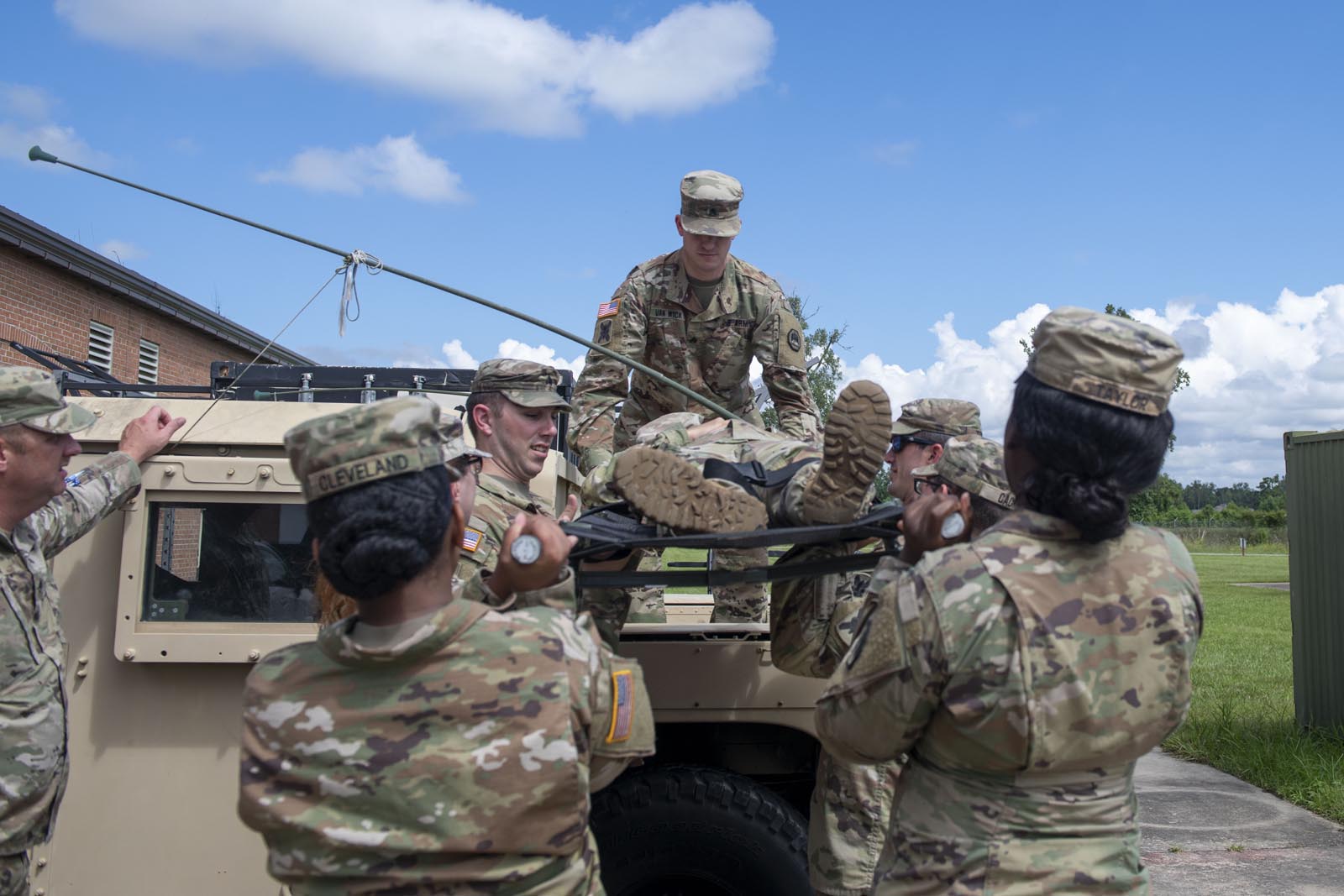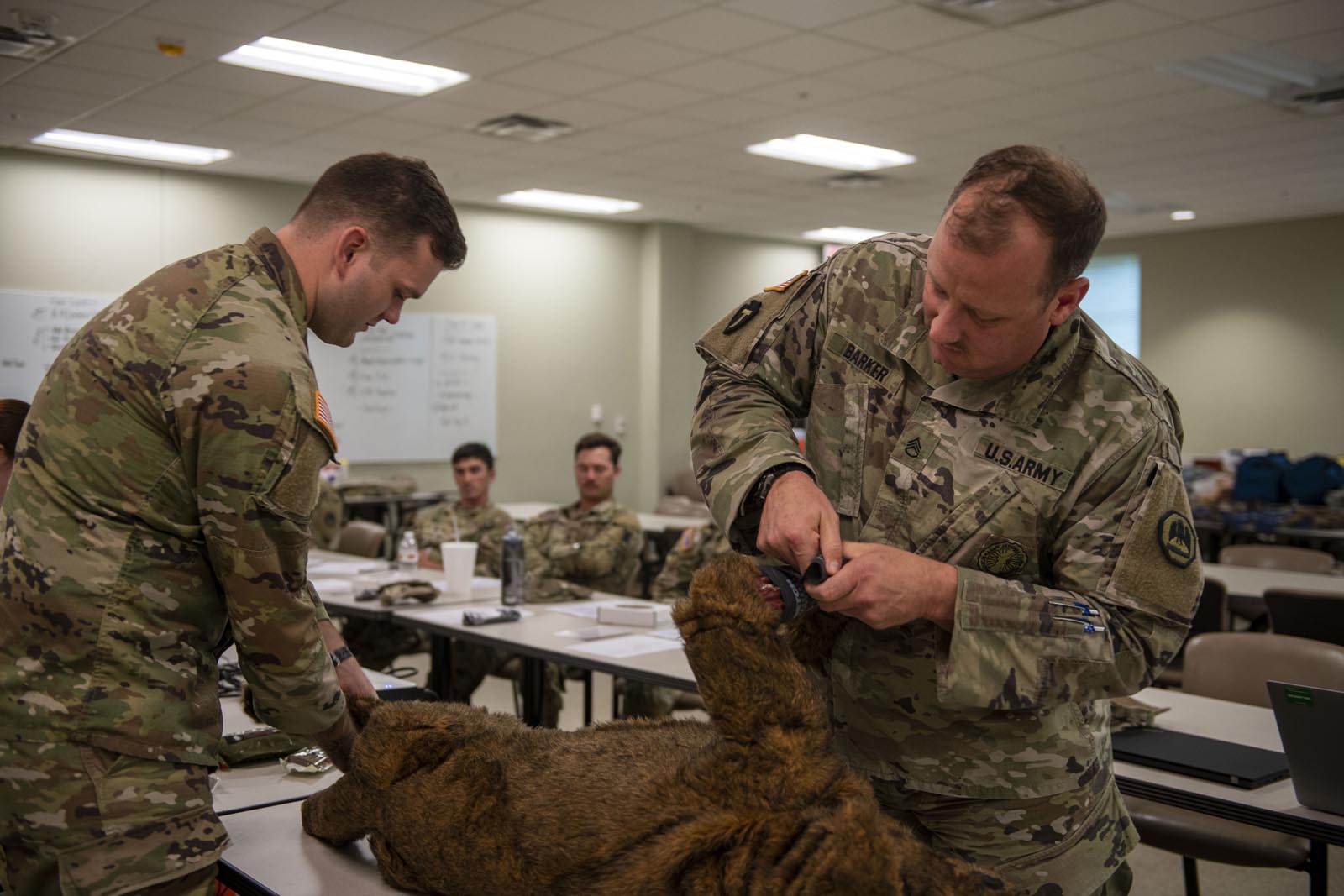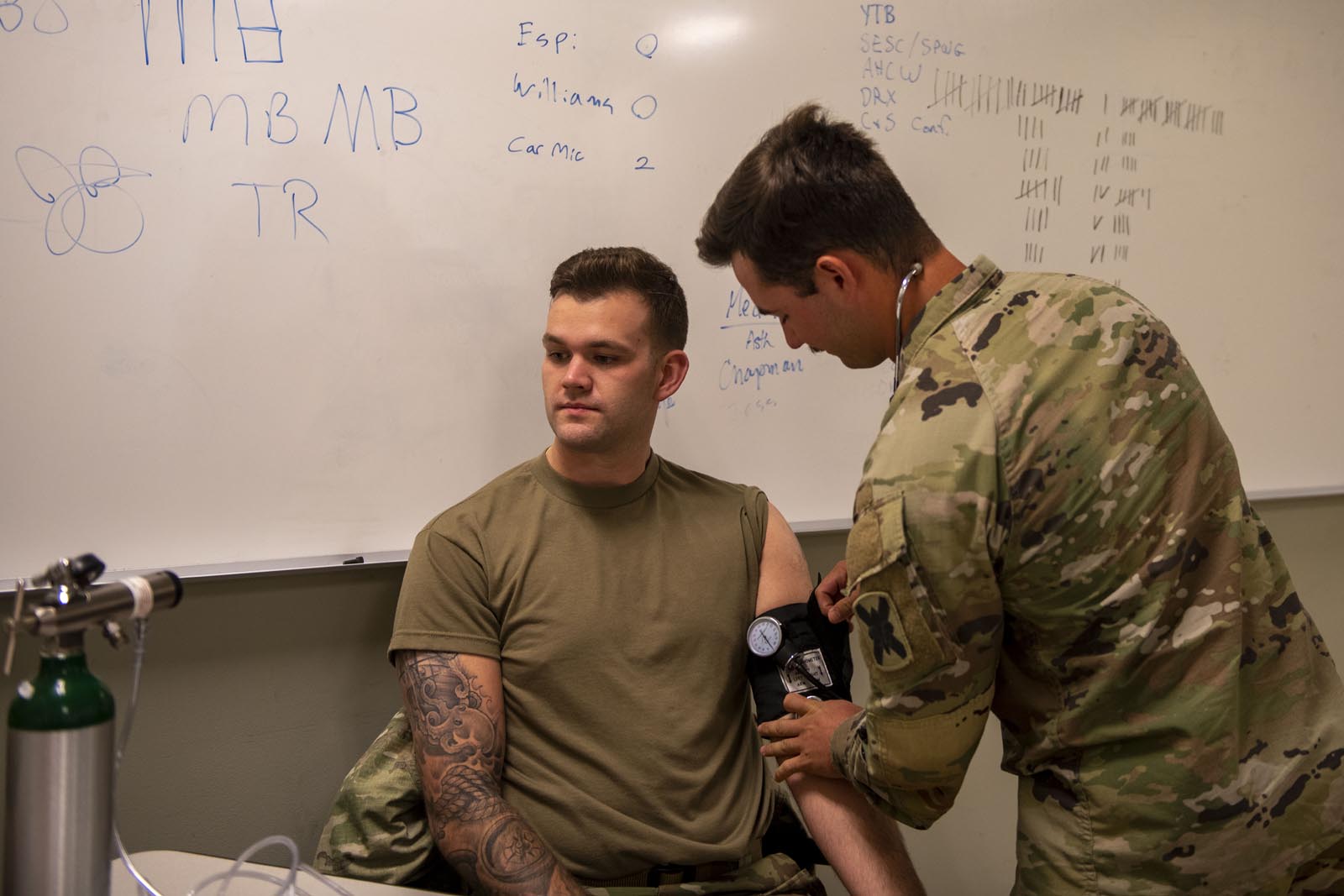La. Guard medics field new hybrid sustainment training
By Staff Sgt. Noshoba Davis, Louisiana National Guard Public Affairs
PINEVILLE, La. – The Louisiana Army National Guard’s (LAARNG) combat medic sustainment program recently conducted a pilot hybrid sustainment training.
The LAARNG was selected by the Combat Medical Sustainment Division (CMSD) to be the first sustainment program in the Army to conduct the course.
 “The Louisiana Army National Guard’s 68W [combat medic] training program is recognized as one of the finest in the entire Army National Guard,” said Master Sgt. Gregory Heischman, senior medical operations noncommissioned officer for the Army National Guard’s Chief Surgeon’s Office at the National Guard Bureau. “Sgt. 1st Class [Howard] Bushey and his training staff offer some of the best training in the nation.”
“The Louisiana Army National Guard’s 68W [combat medic] training program is recognized as one of the finest in the entire Army National Guard,” said Master Sgt. Gregory Heischman, senior medical operations noncommissioned officer for the Army National Guard’s Chief Surgeon’s Office at the National Guard Bureau. “Sgt. 1st Class [Howard] Bushey and his training staff offer some of the best training in the nation.”
A total of 10 medics from the LAARNG participated in the pilot course to renew their National Registry of Emergency Medical Technicians (NREMT) and CPR certifications, which are required to be renewed every two years.
The traditional sustainment course spans 10 days and incorporates both classroom learning and skill lanes. The LAARNG currently conducts four traditional courses a year. The new hybrid program divides a medic’s recertification into two phases, which were conducted July 27-29 and August 11-14.
“The intention for the hybrid program is to utilize it for Soldiers who are needed for most trainings at their home unit, so that we can lessen the training burden on both the Soldier and the unit,” said Sgt. Kennedy Chapman, an instructor and assistant combat medic sustainment program director.
 The first phase of the new course consists of three days of virtual classes. The second phase of training combines medical and trauma lanes and skill tests to evaluate medics over the course of four days. Tested skills include managing battlefield trauma, treating heat and cold injuries, blood draws, K-9 Tactical Combat Casualty Care and medical assessments.
The first phase of the new course consists of three days of virtual classes. The second phase of training combines medical and trauma lanes and skill tests to evaluate medics over the course of four days. Tested skills include managing battlefield trauma, treating heat and cold injuries, blood draws, K-9 Tactical Combat Casualty Care and medical assessments.
According to Sgt. 1st Class Howard Bushey, combat medic sustainment program director, medics should complete the second phase within three months of completing the first phase.
“Compared to the traditional course, this hybrid course provides an opportunity for more ownership of responsibility,” said Sgt. Joseph Van Wick, a medic with the 165th Combat Sustainment Support Battalion. “This training allows me to improve my skills, while providing a refresher for someone who does not practice medicine every day.”
Chapman explained that the LAARNG coordinated with CMSD to prepare a conductive split training schedule based on the original schedule used in the traditional course.
“In comparison, the hybrid course was easier to conduct. It involved less course prep, as all information and handouts were online,” said Chapman. “The in-person skills portion ran smoothly, and the usual ‘burn out’ that comes with the traditional course did not seem to occur here.”
For medics like Van Wick, the hybrid course was a welcomed change compared to the traditional 10-day course.
“It’s nice not being away from home for as many days,” Van Wick said. “I did not feel as exhausted or overwhelmed at the end of this course.”
The LAARNG plans to offer the hybrid course up to twice per year if the program is approved.
“The goal is to give dynamic training while offering medics and their unit flexibility in time at the 68W training site,” said Bushey. “In addition to the hybrid course, we hope to add paramedic refreshers for our flight medics and the Delayed Evacuation Casualty Management (DECM) course.”

